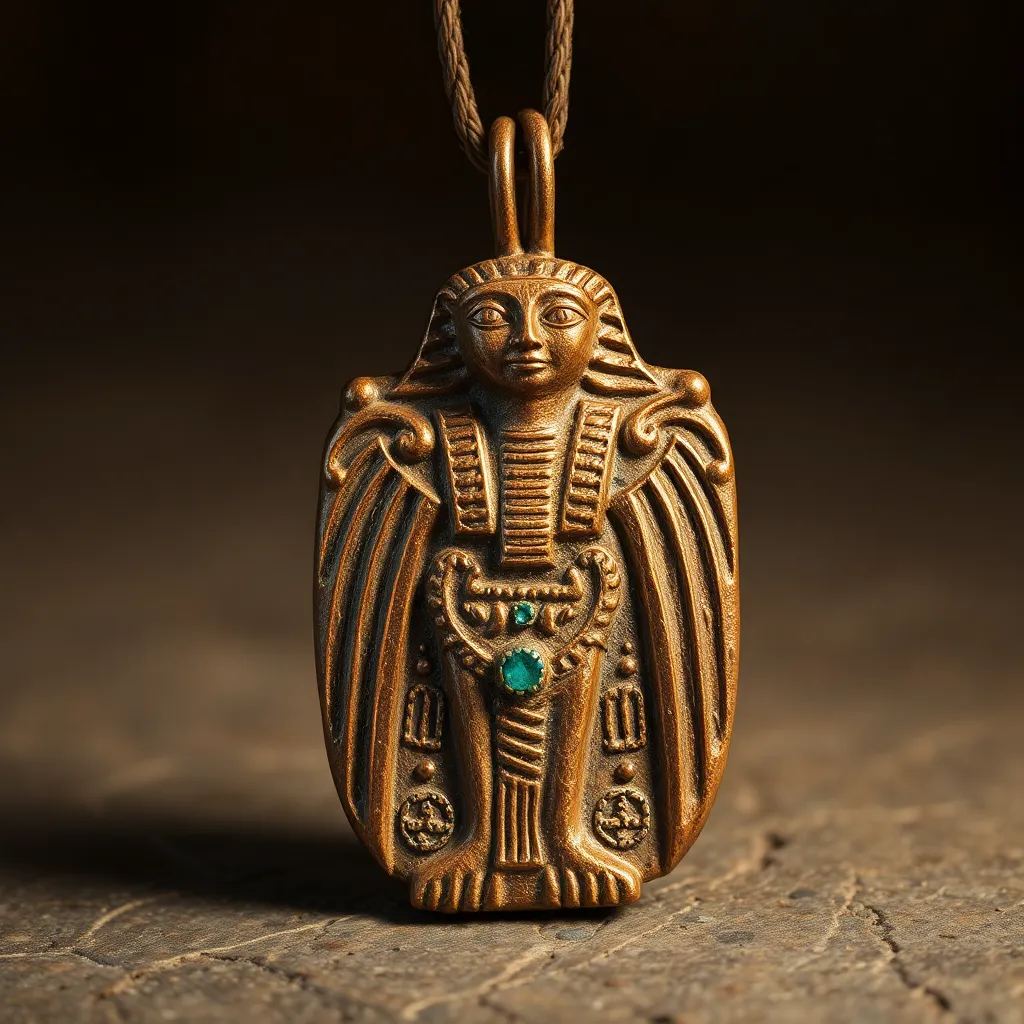The Role of Amulets in Everyday Life in Ancient Egypt
I. Introduction
Amulets are small objects, often worn or carried, that are believed to possess magical properties or protective powers. Across various ancient cultures, including that of Egypt, amulets held significant meaning, serving as a bridge between the physical and spiritual worlds. In ancient Egyptian society, amulets were not merely decorative items; they were integral to the beliefs surrounding protection, health, and power.
Ancient Egyptians held a deep-seated belief in the influence of supernatural forces on daily life. They viewed amulets as vital tools for safeguarding individuals from malevolent spirits, ensuring good fortune, and providing blessings in various aspects of life. This article aims to explore the multifaceted roles of amulets in ancient Egyptian society, highlighting their historical context, types, functions, and lasting legacy.
II. Historical Context of Amulets in Ancient Egypt
The use of amulets in ancient Egypt dates back to the Predynastic period (c. 5000–3100 BCE) and evolved significantly throughout the millennia. Initially, these objects were simplistic in form, often made from natural materials. As Egyptian civilization progressed, so did the complexity and artistry of amulets.
The cultural and religious landscape of ancient Egypt was rich and varied, characterized by a pantheon of gods and a strong belief in the afterlife. Amulets were produced en masse, especially during key periods such as the Middle Kingdom and the New Kingdom, when the demand for protective and funerary objects soared.
III. Types of Amulets and Their Symbolism
Amulets were crafted from a variety of materials, each chosen for its symbolic significance and magical properties. Common materials included:
- Stone: Lapis lazuli and turquoise were favored for their vibrant colors and believed magical qualities.
- Metal: Gold and silver were associated with the divine and offered a sense of protection.
- Clay: Often used for more simple or mass-produced amulets.
Several shapes were commonly used in amulet design, each carrying its own significance:
- Scarabs: Representing rebirth and protection, scarabs were among the most popular amulets.
- Ankhs: Symbolizing life and immortality, the ankh was a powerful emblem in ancient Egypt.
- Eye of Horus: A symbol of protection, health, and restoration.
The color and design of amulets also held great importance. For example, blue and green colors were associated with fertility and rebirth, while red was linked to protection against evil.
IV. Amulets in Daily Life: Protective and Beneficial Functions
Amulets served various protective and beneficial functions in the daily lives of ancient Egyptians:
- Personal Protection: Many Egyptians wore amulets to ward off evil spirits and misfortune, believing that these objects provided a shield against malevolent forces.
- Health and Well-Being: Specific amulets were thought to promote health, cure ailments, and enhance overall well-being. For instance, the Eye of Horus was believed to have healing properties.
- Fertility and Childbirth: Amulets were commonly used by women seeking fertility or protection during childbirth. The goddess Hathor was often invoked in these contexts, with relevant amulets worn for assistance.
V. Amulets in Religious Practices and Funerary Customs
Amulets played a significant role in religious practices and were integral to funerary customs in ancient Egypt:
- Religious Rituals: Amulets were often incorporated into religious ceremonies, believed to invoke divine protection and blessings.
- Burial Practices: It was common to place amulets within tombs or around the mummified body to ensure safe passage to the afterlife and protection against malevolent spirits.
- Case Studies: Notable tomb discoveries, such as that of Tutankhamun, revealed numerous amulets, highlighting their importance in the afterlife and the beliefs surrounding death.
VI. The Role of Amulets in Social and Economic Life
Beyond their protective qualities, amulets also played a role in the social and economic spheres of ancient Egypt:
- Status Symbols: Wealthy individuals often adorned themselves with elaborate amulets, which served as markers of status and power within society.
- Craftsmanship: The production of amulets became a specialized craft, with skilled artisans creating intricate designs for both the living and the dead.
- Everyday Transactions: Amulets were sometimes used in barter or trade, reflecting their value beyond mere ornamental purposes.
VII. The Decline of Amulet Use and Its Legacy
As ancient Egyptian civilization faced various challenges, such as invasions and political changes, the use of amulets began to decline:
- Factors for Decline: The rise of new cultures and religions led to a diminished focus on traditional beliefs, including the use of amulets.
- Lasting Influence: Despite this decline, the legacy of ancient Egyptian amulets continues to influence modern culture, with many people still believing in the protective and healing powers of amulets today.
- Contemporary Interpretations: Modern interpretations of amulets often draw from ancient practices, with various cultures incorporating similar beliefs into their spiritual practices.
VIII. Conclusion
Amulets in ancient Egypt played a multifaceted role, deeply intertwined with the cultural, religious, and social fabric of society. From providing protection and promoting health to serving as status symbols, these small objects wielded significant power in the lives of the ancient Egyptians.
The enduring significance of amulets in cultural history reflects humanity’s ongoing quest for protection, luck, and connection to the divine. As we continue to explore archaeological findings and historical studies, the fascinating world of ancient Egyptian amulets invites us to delve deeper into the beliefs and practices of a civilization that continues to captivate our imaginations.




